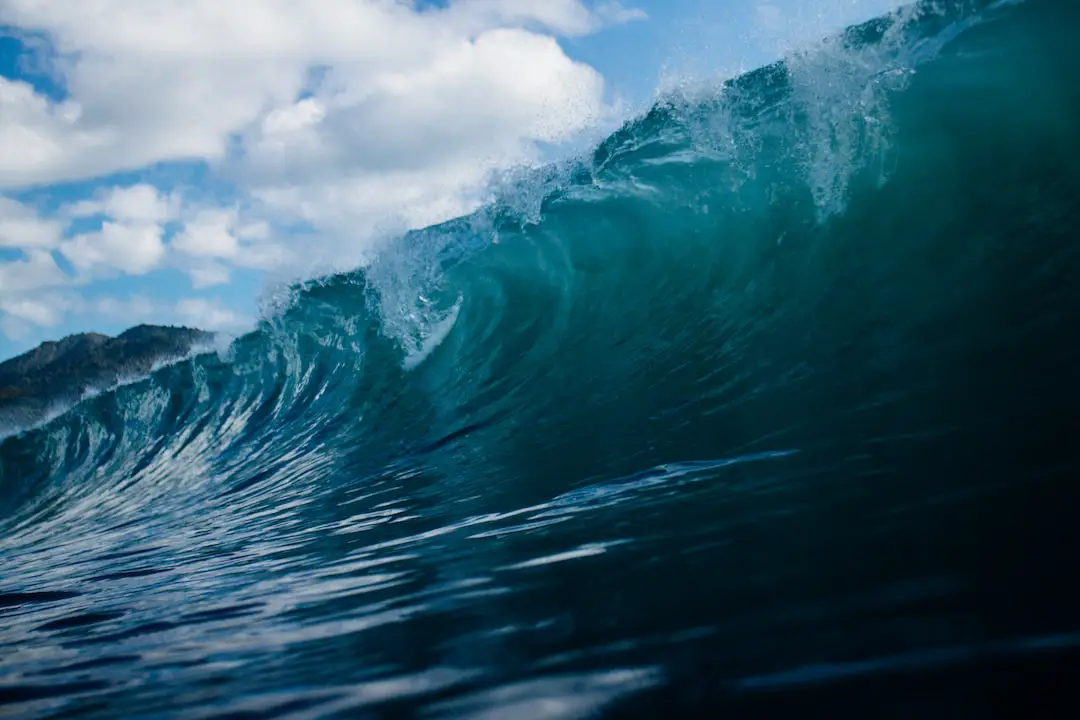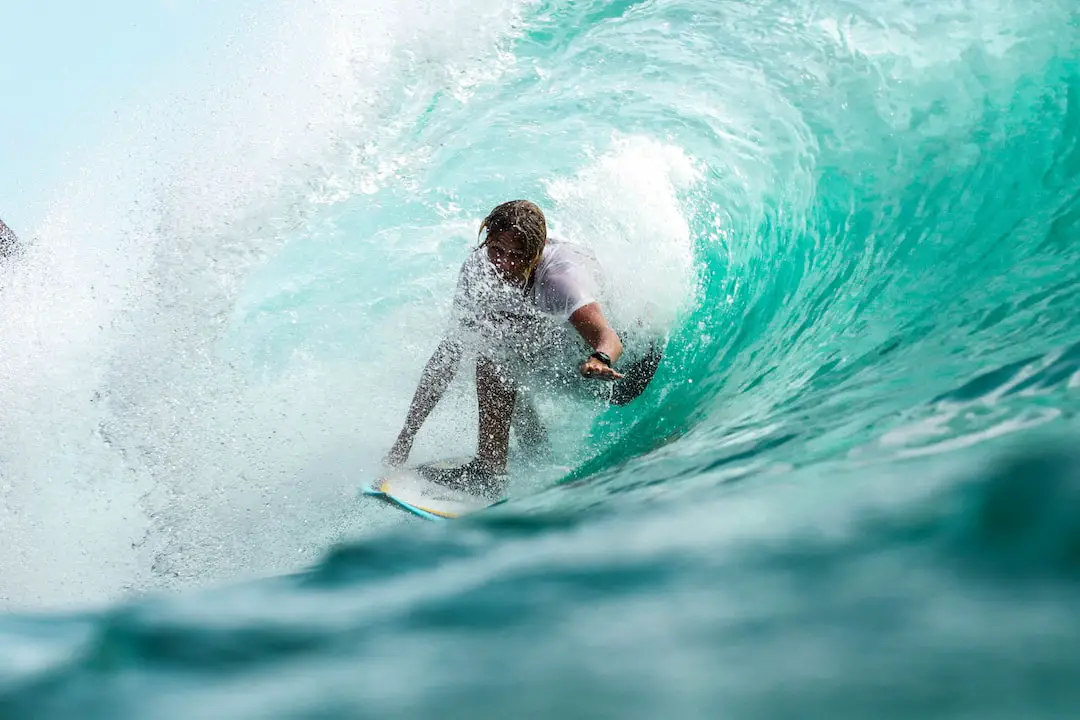Support our hydrofoil educational content for free when you purchase through links on our site. Learn more
Foiling vs Surfing: Which One Should You Choose? [2024]
Have you ever wondered what it would be like to glide effortlessly above the water’s surface, defying gravity and riding waves like never before? Foil surfing, also known as hydrofoiling, offers a thrilling and unique experience that is taking the surfing world by storm. But how does it compare to traditional surfing? In this article, we’ll dive deep into the world of foiling vs surfing, exploring the differences, benefits, and drawbacks of each. So grab your board and let’s get started!
Table of Contents
- Quick Answer
- Quick Tips and Facts
- Background: The Evolution of Foil Surfing
- The Hydrofoil: A Game-Changer in Surfing
- The Appeal of Foil Surfing: Why People Love It
- Foil Surfing vs Traditional Surfing: A Head-to-Head Comparison
- Should You Try Foil Surfing?
- Ready To Try? Here’s What You Need
- FAQ
- Conclusion
- Recommended Links
- Reference Links
Quick Answer
Foil surfing, also known as hydrofoiling, is a revolutionary form of surfing that involves riding waves using a hydrofoil attached to a surfboard. The hydrofoil lifts the board above the water’s surface, reducing drag and allowing for a smoother and faster ride. Foil surfing offers a unique sensation of flying above the water and enables surfers to ride smaller waves or even flat water conditions. While it requires some skill and practice to master, the rewards are well worth it for those seeking an exhilarating and challenging experience.
Benefits of Foil Surfing:
- Ability to ride smaller waves or even flat water conditions
- Longer rides and multiple wave catches
- Enhanced maneuverability and tighter turns
- Exhilarating sensation of flying above the water
- Possibility to be towed behind a boat or jetski
Drawbacks of Foil Surfing:
- Steeper learning curve compared to traditional surfing
- Requires additional equipment (hydrofoil and foil board)
- Potential danger due to the sharp metal foil
- Limited availability of rental equipment and lessons
CHECK PRICE on: Foil Boards | Hydrofoils
Quick Tips and Facts
Before we dive deeper into the world of foil surfing, here are some quick tips and interesting facts to get you started:
- Foil surfing is a relatively new trend in the surfing world, gaining popularity in recent years.
- The hydrofoil technology used in foil surfing is inspired by aeronautic principles, reducing drag and resistance.
- Foil surfing allows surfers to ride waves that are typically considered too small for traditional surfing.
- It’s recommended to have some experience in regular surfing before attempting foil surfing, as it requires a good understanding of wave dynamics and board control.
- Foil boards and hydrofoils can be rented from specialized surf shops, and lessons are available for beginners.
- Foil surfing can be done in various water conditions, including flat water, open ocean, and even behind a boat or jetski.
Now that we have covered the basics, let’s take a closer look at the background and evolution of foil surfing.
Background: The Evolution of Foil Surfing

Foil surfing has its roots in the early 20th century when pioneers like Alexander Graham Bell and Enrico Forlanini experimented with hydrofoil designs. However, it wasn’t until the 1990s that foil surfing started gaining traction as a legitimate sport.
The first commercially available hydrofoil surfboard was introduced by Laird Hamilton, a legendary big wave surfer. Hamilton’s innovative design featured a hydrofoil attached to the bottom of a surfboard, allowing him to ride waves with unparalleled speed and stability.
Since then, foil surfing has evolved rapidly, with advancements in hydrofoil technology and board design. Today, there are various types of foil boards and hydrofoils available, catering to different skill levels and riding preferences.
The Hydrofoil: A Game-Changer in Surfing
At the heart of foil surfing is the hydrofoil, a fin-like structure with wings that generate lift when in motion. The hydrofoil is attached to the bottom of a specially designed surfboard, lifting the board above the water’s surface as it gains speed.
The hydrofoil’s design allows it to reduce drag and resistance, resulting in a smoother and faster ride. By lifting the board above the water, the hydrofoil eliminates the limitations imposed by wave size, enabling surfers to ride smaller waves or even flat water conditions.
The hydrofoil also enhances maneuverability, allowing surfers to make tighter turns and carve through the water with precision. This newfound agility opens up a whole new world of possibilities for experienced surfers looking to push their limits and explore new tricks and techniques.
The Appeal of Foil Surfing: Why People Love It
Foil surfing has captured the hearts of many surfers around the world, and it’s not hard to see why. Here are some of the key reasons why people are drawn to this exhilarating sport:
-
Versatility: Foil surfing allows surfers to ride waves in a wide range of conditions, from small swells to flat water. This versatility means that surfers can enjoy the thrill of riding waves even when the conditions are less than ideal.
-
Extended Ride Time: The hydrofoil’s ability to lift the board above the water’s surface results in longer rides and multiple wave catches. Surfers can glide effortlessly across the water, maximizing their time on the wave and experiencing a sense of freedom and flow like never before.
-
Enhanced Maneuverability: The hydrofoil’s design enables surfers to make tighter turns and carve through the water with precision. This enhanced maneuverability opens up a whole new world of possibilities for experienced surfers looking to push their limits and explore new tricks and techniques.
-
Exhilarating Sensation: Foil surfing offers a unique sensation of flying above the water, defying gravity, and harnessing the power of the waves. The feeling of gliding effortlessly across the water’s surface is unlike anything else, providing an adrenaline rush that keeps surfers coming back for more.
-
Towing Possibilities: Foil surfing is not limited to catching waves. Surfers can also be towed behind a boat or jetski, opening up endless opportunities for exploration and adventure. This versatility makes foil surfing a favorite among thrill-seekers and those looking to push the boundaries of what is possible on a surfboard.
Foil Surfing vs Traditional Surfing: A Head-to-Head Comparison
Now that we have explored the world of foil surfing, let’s compare it to traditional surfing to help you decide which one is right for you. Here’s a head-to-head comparison of the two:
| Aspect | Foil Surfing | Traditional Surfing |
|---|---|---|
| Wave Size | Can ride smaller waves or even flat water | Requires larger waves for optimal performance |
| Ride Time | Longer rides and multiple wave catches | Shorter rides |
| Maneuverability | Enhanced maneuverability and tighter turns | Limited maneuverability |
| Learning Curve | Steeper learning curve | Easier to get started |
| Equipment | Requires additional equipment (hydrofoil) | Standard surfboard and fins |
| Danger | Potential danger due to sharp metal foil | Lower risk of injury |
| Availability | Limited availability of rental equipment | Widely available |
| Skill Level | Suitable for experienced surfers | Suitable for all skill levels |
As you can see, foil surfing offers unique advantages such as the ability to ride smaller waves or even flat water conditions, longer rides, and enhanced maneuverability. However, it also comes with a steeper learning curve and requires additional equipment.
On the other hand, traditional surfing is more accessible to beginners, requires less specialized equipment, and carries a lower risk of injury. It relies on larger waves for optimal performance and offers a different kind of thrill and connection with the ocean.
Ultimately, the choice between foil surfing and traditional surfing depends on your skill level, preferences, and the type of experience you’re seeking. If you’re an experienced surfer looking for a new challenge and the ability to ride waves in any condition, foil surfing may be the perfect fit for you. However, if you’re just starting out or prefer the classic feel of traditional surfing, sticking to a standard surfboard is a great choice.
Should You Try Foil Surfing?
If you’re intrigued by the idea of foil surfing, you might be wondering if it’s the right choice for you. Here are a few factors to consider before taking the plunge:
-
Experience Level: Foil surfing requires a good understanding of wave dynamics, board control, and balance. It’s recommended to have some experience in regular surfing before attempting foil surfing. If you’re a beginner, it’s best to establish yourself on a regular surfboard first before venturing into the world of foil surfing.
-
Learning Curve: Foil surfing has a steeper learning curve compared to traditional surfing. It takes time and practice to master the art of riding a hydrofoil and maintaining balance above the water. Be prepared for a challenging but rewarding journey as you progress and improve your skills.
-
Equipment and Lessons: Foil surfing requires specialized equipment, including a foil board and hydrofoil. These can be rented from specialized surf shops, but availability may vary. Additionally, consider taking lessons from experienced instructors who can guide you through the learning process and ensure your safety.
-
Safety Considerations: Foil surfing can be dangerous if not approached with caution. The sharp metal foil poses a potential risk of injury, especially during wipeouts. It’s essential to wear appropriate safety gear, such as a helmet and impact vest, and to be mindful of your surroundings and other surfers in the water.
If you’re up for the challenge and willing to put in the time and effort to learn, foil surfing can offer a truly unique and exhilarating experience. Just remember to start small, take it step by step, and prioritize safety at all times.
Ready To Try? Here’s What You Need
If you’re ready to embark on your foil surfing journey, here’s a checklist of what you’ll need:
-
Foil Board: Look for a foil board that suits your skill level and riding preferences. There are various options available, ranging from beginner-friendly boards to high-performance models. Consider factors such as board size, volume, and construction materials when making your choice.
-
Hydrofoil: Choose a hydrofoil that is compatible with your foil board and offers the performance characteristics you desire. Different hydrofoils have varying wing shapes, sizes, and materials, which can affect the ride experience. Consult with experts or experienced foil surfers to find the right hydrofoil for you.
-
Safety Gear: Prioritize safety by investing in appropriate safety gear, including a helmet, impact vest, and leash. These items will help protect you from potential injuries and ensure a safer and more enjoyable foil surfing experience.
-
Lessons: Consider taking lessons from experienced instructors who can provide guidance, safety tips, and help accelerate your learning process. Lessons can be invaluable in building a strong foundation and developing proper technique.
Remember, foil surfing is a challenging sport that requires dedication, practice, and a willingness to learn. Be patient with yourself, celebrate small victories, and enjoy the journey as you progress and unlock new levels of skill and confidence.
FAQ

Is foil boarding easier than surfing?
Foil boarding is generally considered more challenging than traditional surfing. It requires a good understanding of wave dynamics, board control, and balance. If you’re new to surfing, it’s recommended to establish yourself on a regular surfboard before attempting foil boarding.
Read more about “Wind Foiling 101: Unleash the Power of the Wind”
Why are hydrofoils not popular?
Hydrofoils are not as popular as traditional surfboards due to several factors. Foil boarding requires specialized equipment, has a steeper learning curve, and can be more dangerous if not approached with caution. Additionally, the availability of rental equipment and lessons may be limited in some areas.
Read more about “… Are Hydrofoils Safe? A Comprehensive Guide to Hydrofoil Boarding Safety”
How hard is it to learn foiling?
Learning to foil can be challenging, especially for those who are new to surfing. It requires time, practice, and patience to develop the necessary skills and balance. Taking lessons from experienced instructors can greatly accelerate the learning process and help you progress more quickly.
Read more about “How Does Wake Foiling Work? …”
Can you foil surf without waves?
Yes, one of the unique aspects of foil surfing is the ability to ride waves that are typically considered too small for traditional surfing or even in flat water conditions. The hydrofoil lifts the board above the water’s surface, allowing for a smooth and fast ride regardless of wave size.
Read more about “Foil Surfing: The Ultimate Guide to Riding the Waves of Innovation …”
Conclusion

Foil surfing, also known as hydrofoiling, offers a thrilling and unique experience that is revolutionizing the world of surfing. With the ability to ride smaller waves or even flat water conditions, longer rides, and enhanced maneuverability, foil surfing opens up a whole new world of possibilities for experienced surfers looking for a new challenge.
While foil surfing comes with a steeper learning curve and requires additional equipment, the rewards are well worth it for those seeking an exhilarating and challenging experience. Just remember to prioritize safety, start small, and be patient with yourself as you progress and unlock new levels of skill and confidence.
So, whether you choose to ride the waves on a traditional surfboard or soar above the water on a hydrofoil, the choice is yours. Embrace the adventure, follow your passion, and enjoy the incredible journey that surfing has to offer.
Recommended Links
CHECK PRICE on: Foil Boards | Hydrofoils | Wetsuits | Surfboard Leashes
Shop Surfing Gear on: Amazon | Walmart | Etsy
Learn More About Hydrofoiling™:
Is Hydrofoiling easier than surfing? Read More


